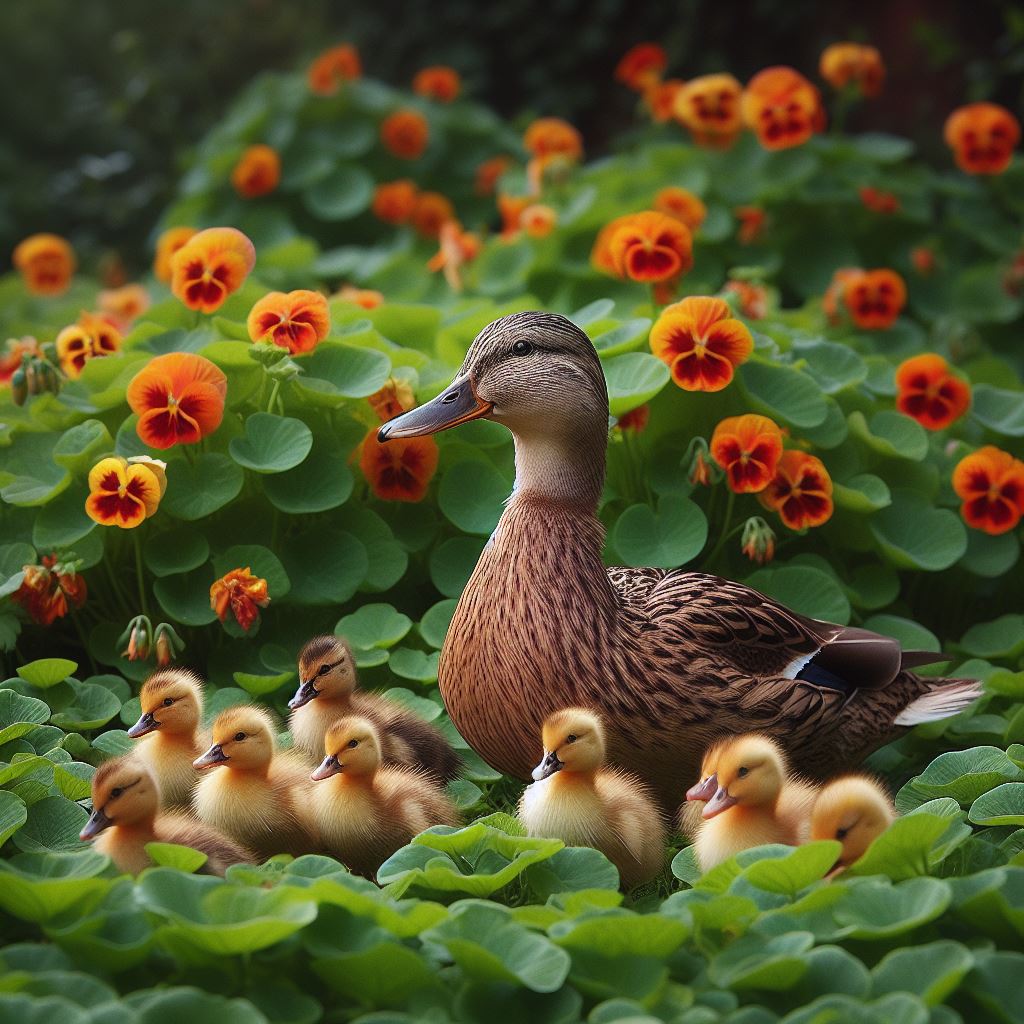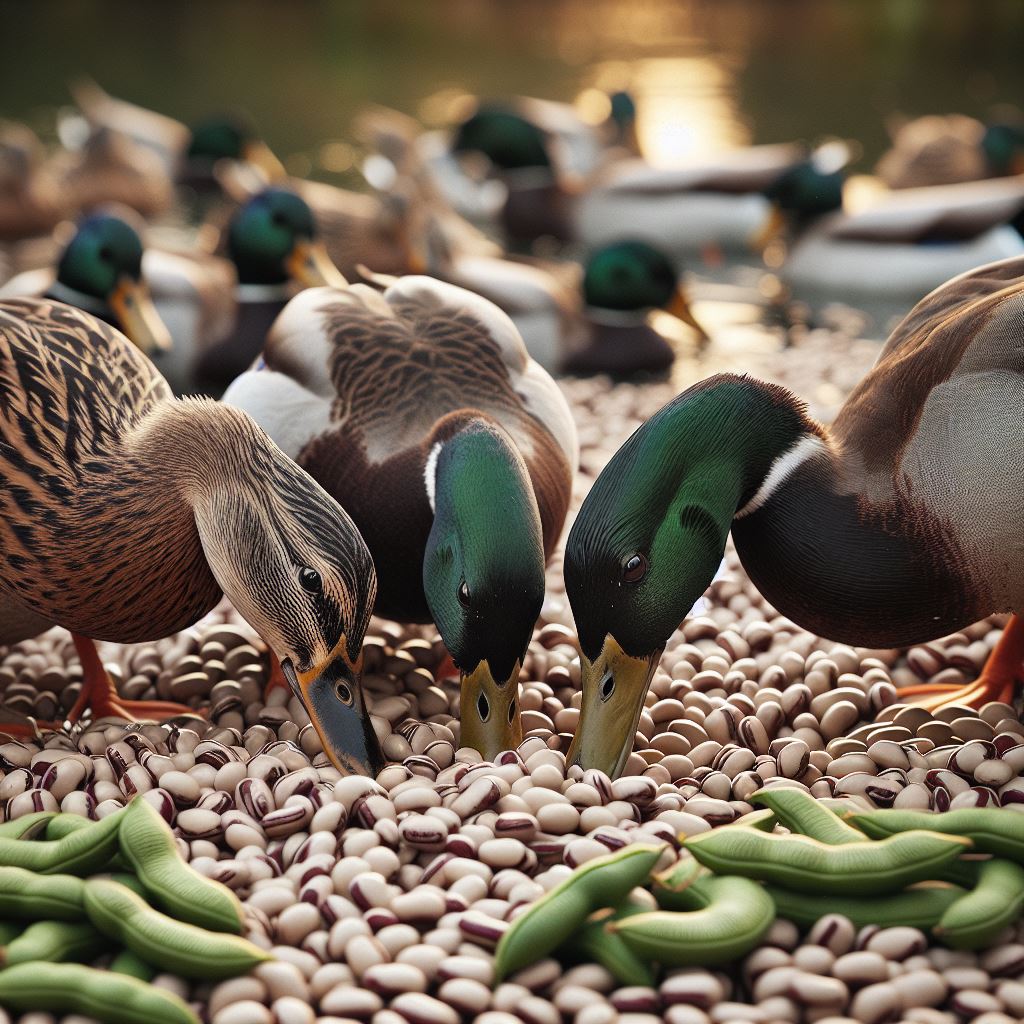Do Ducks Know If Their Eggs Are Fertile?

Table of content:
Ducks make wonderful additions to any backyard farm or homestead. Who doesn’t love their quacky chatter and waddling walks? If you plan to hatch some ducklings, you’ll need to incubate the eggs. But how can you tell if your duck’s eggs are even fertile in the first place?
Knowing whether your duck eggs are fertile can save you time and disappointment. Incubating dud eggs that will never hatch is frustrating! Let’s look at the signs of fertile duck eggs and what duck moms do to nurture their broods.
Why Do Mother Ducks Lay Unfertilized Eggs?
Even with a drake around, it’s normal for some eggs in a clutch to be unfertilized. Mother ducks don’t have control over this. There are a few reasons it can happen.
1. The Drake is Infertile
While uncommon, drakes can sometimes be sterile or have low fertility. Just like roosters, individual males vary in virility and semen quality. This affects how many eggs they fertilize.
If your duck pen has one or more drakes but hardly any eggs hatch, low male fertility may be the issue. Bring in a younger drake to improve fertility rates.
2. Poor Timing Between Mating and Egg Laying
Ducks are most receptive to mating right before and after each egg is laid. But the fertile window only lasts around 48 hours once an egg ovulates.
If a duck isn’t mated close enough to her lay time, some released ova will go unfertilized even with a virile drake present.
3. The Drake Can’t Mate With Every Female
A single drake can breed 6-10 duck hens in theory. But in large flocks, he simply can’t cover every female every day she lays.
Dominant hens might also monopolize the drake’s attention, preventing timid ducks from getting fertilized. Adding more drakes helps ensure all females get mated routinely.
4. Some Eggs Don’t Ovulate Properly
Not all ova fully mature and release from the ovary during a duck’s laying cycle. These underdeveloped or retained eggs can’t be fertilized. The hen lays them as duds.
This is most common in young layers and aging ducks. But even healthy hens ovulate a percentage of yolks that fail to develop normally now and then.
5. Stressors Can Delay Ovulation
Heat stress, illness, lack of water, predators, overcrowding, and other factors impact ovulation. If the ovary holds onto its yolks too long, they age out before hitting the nest as viable eggs.
Stress management and an optimal habitat help hens ovulate efficiently. Free ranging also lets ducks find natural stress relief in ponds.
Do Ducks Sit More on Fertile Eggs?
When a duck goes broody and stops laying, is she more motivated to incubate if her eggs are actually fertilized? Research suggests duck hens can detect fertility levels.
Broody Behavior Differs Between Hens
Not all duck breeds have strong natural broodiness. Call ducks, for example, rarely go broody without human intervention. Other ducks have high broody drives. Welsh Harlequins, Buff Orpingtons, and Pekins are very maternal.
The individual duck’s personality makes a difference too. You may have two hens of the same breed with vastly different mothering instincts. Some hens diligently sit for up to 50 days without leaving the nest.
Nesting Activity Increases as Embryos Grow
Incubating hens seem able to pick up on cues that their eggs are developing. Movement, vocalizations, and heartbeats from the embryos get stronger as they near hatching.
Research on broody chickens found more shifts in position, calling, and sitting tightness in response to chick cues in the final week before hatching. Mother ducks probably react similarly.
Broodiness Persists Longer For Fertile Clutches
While any batch of eggs might trigger initial broody behavior in a duck, she’s less likely to keep sitting on non-viable eggs as time passes. The lack of sensations from the eggs seems to discourage her.
With fertile, growing eggs, hens tend to stay steadfast through the full incubation and hatching timeline. The sensory input from the embryos motivates her maternal diligence.
Drake Activity Can Influence Broodiness
Having a drake around may motivate broody behavior in itself, as the hen’s instincts tell her mating offers fertile eggs. One study found broodiness increased in hens that could see, hear, and interact with drakes – even when no actual mating occurred.
So the presence of a virile male seems tied to broody motivation, regardless of the eggs’ true fertility status.
Candling Duck Eggs for Fertility
Candling uses illumination to see inside an egg. It’s an easy fertility test for chicken eggs, but more challenging with ducks. You can still try it with care and know what to look for.
Wait 7-10 Days After Laying
Don’t attempt candling right after the duck lays her eggs. Embryo development needs time before it becomes visible. Wait at least one week into incubation before candling.
Candling too early risks damaging the tiny embryos inside when light shines through. A 1-week minimum allows growth to a more resilient stage. 10-14 days gives the best window.
Use a Bright Narrow Beam
Don’t candle duck eggs in direct sunlight – it’s too intense. A high lumen LED flashlight works well. The beam should be narrow and concentrated, not diffuse.
Wider light dispersal allows glare to reflect off the egg’s inner shell membrane. A tight beam lets more light penetrate to the fertile structures you want to see.
Work in a Dark Environment
Candling works best in a pitch dark room so your eyes are adjusted. Any ambient light will compromise what you can discern inside the egg. Completely cover the flashlight except for the beam hole.
You may need a partner to cup their hands around the egg and light to block out all other illumination sources.
Angle Light Toward the Air Cell
Since the air pocket rises to the top of the egg, angle your candling light beam upward as you hold the large end of the egg toward the light source. This highlights the telltale air cell of a fertile egg.
Tilt the egg slowly to let light penetrate into different areas. But avoid rotating it completely upside down, which can harm the embryo.
Look for the Bullseye and Blood Vessels
That classic “bullseye” pattern is the best confirmation of a fertile egg when candling ducks. You want to see the outline of the air cell, then radiating blood vessels. Air cell movement as the embryo develops causes the bullseye effect.
You may also spot the dark embryo mass itself. However, it’s harder to see in ducks than chickens due to their egg structure. Just look for those air cell and vessel indicators.
Do Duck Hens Crush Their Own Fertile Eggs?
As ducks shift around on the nest while incubating, it’s natural to worry about them damaging the eggs. But fortunately, hens have some behaviors that help protect developing embryos.
Muscle Control While Settling Down
When a broody duck initially settles onto her clutch, she will actually lift herself partially and hover over the nest. This avoids her full weight from dropping onto the eggs abruptly.
The hen then lowers herself slowly in a controlled manner. Special muscles pull the feathers aside so there is skin-to-egg contact for warmth transfer rather than crushing weight.
Egg Turning and Movement
Throughout incubation, hens need to rotate and move their eggs frequently for proper embryonic growth. Ducks accomplish this with care not to harm them.
They use their muscular cloacal region to cup and roll eggs gently between turns. Hens time their nest departures so eggs don’t chill too much in the open air.
Instincts Against Egg Breakage
Natural selection favors duck hens that don’t break their own eggs. Those that fatally crack eggs during incubation are less reproductively successful.
Modern brooding behaviors in ducks reflect generations of ingrained instincts to keep eggs intact. Rare accidents may happen, but hens largely know how to avoid damaging their clutch.
Nest Structure Provides a Buffer
The nest’s shape also protects eggs from a duck’s mass. The depression and sides hold eggs so they don’t jostle excessively as the hen circles and rearranges them with her body.
Good nesting materials like grass, leaves, and down create a cushion between eggs that absorbs minor movements without harm.
Egg Strength Increases Over Time
Another survival adaptation is that fertile eggshells grow tougher and less prone to breaking as calcium deposits thicken during incubation. This fortifies them against fracture.
Early in development, the shell has more elasticity too. As embryos grow, the shells resist chipping and indentation more while retaining some flexibility.
Why Do Ducks Lay Without a Drake Around?
If you notice a duck laying eggs but no drake has been present, you may wonder why she’s laying seemingly unfertilizable eggs. There are a few key reasons this occurs.
1. Their Biology Programs Them to Nest
Like chickens, duck hens don’t require actual mating to stimulate egg laying. As daylight hours increase in spring, photoreceptors in the duck’s skull tell her ovaries to begin depositing yolks.
This prepares the hen’s body for reproduction whether a drake is present or not. She then seeks a nest site to deposit her eggs. The hormones compelling her to lay and brood persist even without fertilization.
2. It’s Practice for the Future
Younger ducks may lay multiple seasons before fertile mating occurs. This primes them for successfully brooding and rearing ducklings later when they breed.
The “practice” rounds of laying and sitting allow the ducks to perfect their mothering skills in advance. This improves survival rates once the eggs are fertilized.
3. It Provides Calcium and Other Nutrients Back to the Hen
Rather than the eggs being wasted without a drake, laying still benefits the hen’s health. As each egg forms, it pulls calcium and other minerals from her bones and tissues.
Laying and later eating the dud eggs recycles much of those nutrients through digestion. This helps replenish the duck’s mineral stores for proper egg production in the future.
4. It Can Help Attract a Drake
The sight and sound of duck eggs may entice wild drakes to investigate and join the flock. Drakes seek opportunities to fertilize females and pass on their genes.
Nesting activity alerts drakes that receptive hens reside nearby. This can draw new mates from the wild population.
Final Thoughts
Knowing if your duck’s eggs are fertile takes some observational skills along with an understanding of duck reproductive biology. Look for male activity, maternal instincts, egg characteristics, and embryonic cues when determining if eggs are viable.
While some dud eggs are inevitable even with a drake present, a fertile flock produces plenty of hatchable eggs. As long as your ducks have proper breeding conditions and care, you should see ducklings peeping soon!
Welcome. I’m Adreena Shanum, the proud owner of this website, and I am incredibly passionate about animals, especially poultry. I founded adreenapets.com as a labor of love, stemming from my desire to share my knowledge and experiences with poultry enthusiasts worldwide.




